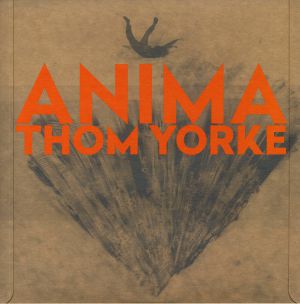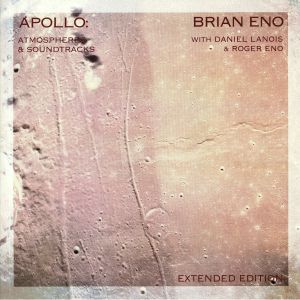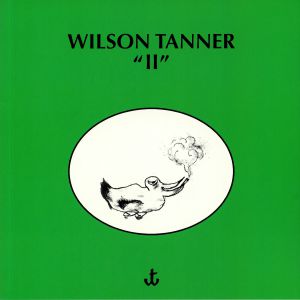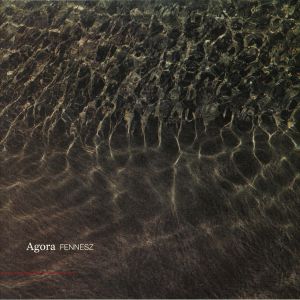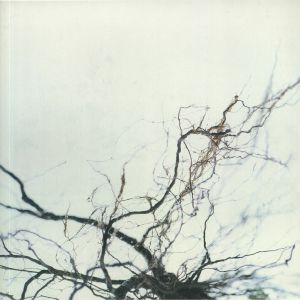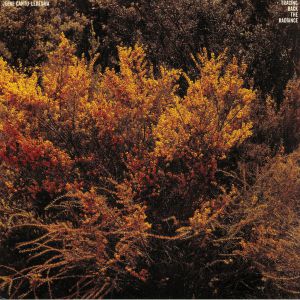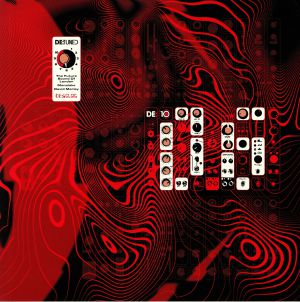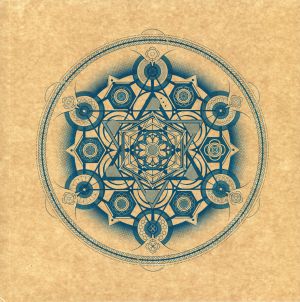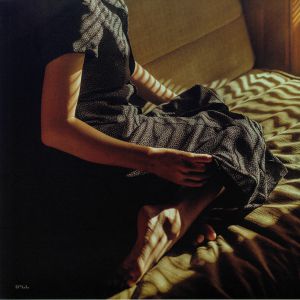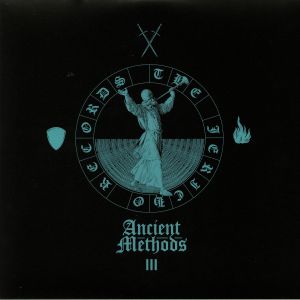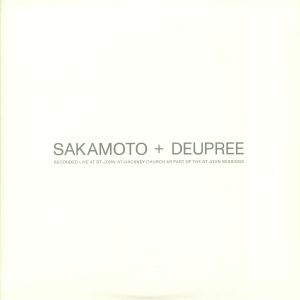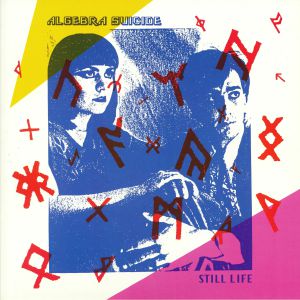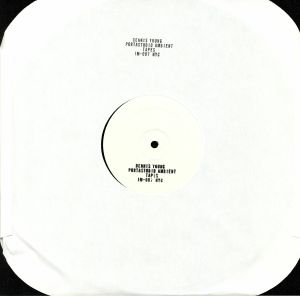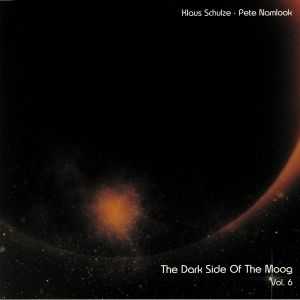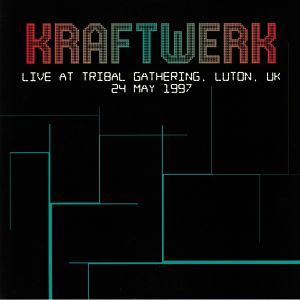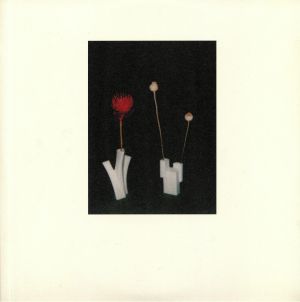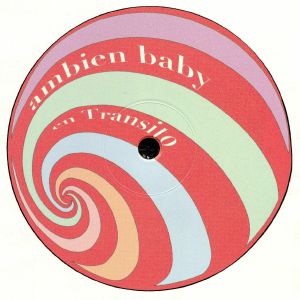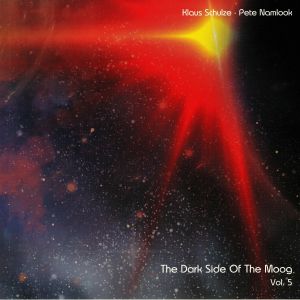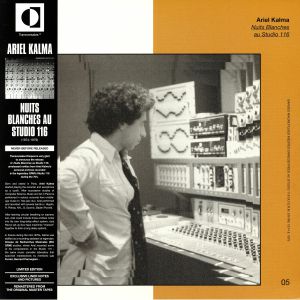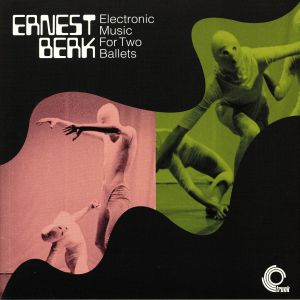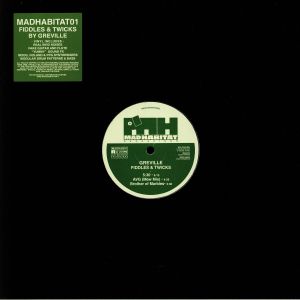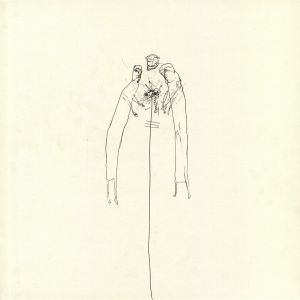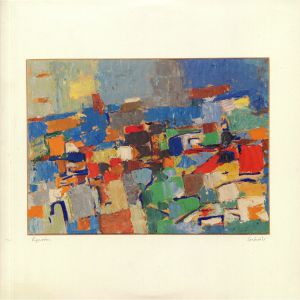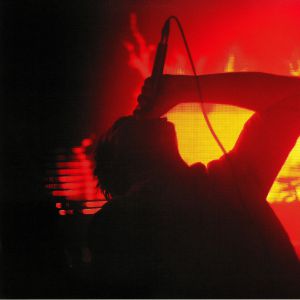
Juno Recommends Leftfield
Juno Recommends Leftfield August 2019
2 Sep 2019
Read more...
1
Review: It's taken a while, but finally Thom Yorke's impressive third solo album, "ANIMA", is available on wax (and in a fetching shade of orange, too). A future classic that continues the legacy he started with XL Recordings back in 2006 (with his solo debut The Eraser), ANIMA is well worth picking up, as Yorke and co-producer Nigel Godrich offer up evocative, off-kilter songs built around the twin attractions of the Radiohead man's distinctive vocals and skewed backing tracks rich in layered electronic noise, body-bending sub-bass, discordant synthesizer parts and intriguingly jaunty drum loops. Highlights are plentiful throughout, from the creepy, lo-fi ambient swirl of "Last I Heard (...He Was Circling the Drain)" and "Dawn Chorus" (a blissfully dewy-eyed early morning soundscape), to the low-slung, post-trip-hop hum of "I Am A Very Rude Person" and the fizzing, jazz-fired thrust of "Impossible Knots". Melancholic, yes. Deep and self-effacing, of course. Nihilistic, not really. Percussive futurist sub-pop is back.
...Read more
out of stock $37.35
2
Review: Angela was the studio project of husband/wife duo Angela and Ingo Werner formed in 1981 in Russelsheim, Germany. Ingo had classical training in bassoon and piano at the Akademie fur Tonkunst in Darmstadt from 1966-70. He joined Krautrock band My Solid Ground in 1971 before going on to form his own project Baba Yaga in 1974. In the late 70s he formed the ensemble AIR with Armin Stowe and Reinhard Karwatky. The project debuted with a a concert at ARS Electronica Competition in Linz, Austria 1980, which they won. Klaus Schulze was on the jury with Wendy Carlos and Robert Moog - but more importantly, Angela was in the audience. Two days later, Ingo told the band he needed a singer, so they asked Angela, and recorded two albums for RCA between 1981-82 before being dropped. Ingo wanted to work on a new project that involved dancers and live video. They recruited American performance artist Jyl Porch, who was living in Munich, to assist with choreography with her friend Kirsten McKenley. Jyl ended up recording her own album first, which gained interest from Klaus Schulze, who helped them secure a deal with EMI in 1983. Later that year, the trio recorded 4 songs that would be released on Angela 'Fantasy' single on 7" and 12" formats in 1984.
The music on 'Fantasy' was completely created with computer software of Ingo's own design. The concept of a polyrhythmic, polyphonic, and polydynamic sequencer was realized by Ingo after a visit to Wolfgang Palm in Hamburg. He paired his sequencer with Palm's legendary PPG Wave Computer System, allowing for more dynamic and nuanced programming. Angela programmed the music, sang, and wrote the lyrics to "Painted Love", while Ingo arranged and played all electronics and keyboards. Jyl wrote the lyrics for "Fantasy" and the slow and sleazy, electronic disco B-side "I Gotta Little Love", where she also sings background vocals and the "hot little flame" rap. The original B-side to the 7" version was a cover of the 1967 Hal Hackady and Lee Pockriss song "Kites", made famous by Simon Dupree and the Big Sound. All songs have been remastered by George Horn at Fantasy Studios in Berkeley. The EP features the original 1984 cover artwork with a striking photo of Angela styled by Jyl in severe Neue Deutsche Welle fashion, and includes an insert with lyrics and and photos designed by Maycec..
The music on 'Fantasy' was completely created with computer software of Ingo's own design. The concept of a polyrhythmic, polyphonic, and polydynamic sequencer was realized by Ingo after a visit to Wolfgang Palm in Hamburg. He paired his sequencer with Palm's legendary PPG Wave Computer System, allowing for more dynamic and nuanced programming. Angela programmed the music, sang, and wrote the lyrics to "Painted Love", while Ingo arranged and played all electronics and keyboards. Jyl wrote the lyrics for "Fantasy" and the slow and sleazy, electronic disco B-side "I Gotta Little Love", where she also sings background vocals and the "hot little flame" rap. The original B-side to the 7" version was a cover of the 1967 Hal Hackady and Lee Pockriss song "Kites", made famous by Simon Dupree and the Big Sound. All songs have been remastered by George Horn at Fantasy Studios in Berkeley. The EP features the original 1984 cover artwork with a striking photo of Angela styled by Jyl in severe Neue Deutsche Welle fashion, and includes an insert with lyrics and and photos designed by Maycec..
...Read more
out of stock $13.56
3
Cat: 774777 2. Rel: 22 Jul 19
Ambient/Drone
Review: To tie in with the 50th anniversary of the Apollo 11 moon landings, Brian Eno has decided to put out a new edition of his decidedly spacey 1983 ambient album "Apollo: Atmospheres & Soundtracks", which started life as the soundtrack to a long-forgotten documentary about NASA's space program. The edition is rather special, not only because it contains a remastered version of the original set created by Eno, his brother Roger and regular collaborator Daniel Lanois, but also because it contains a second disc of previously unheard material. This is not old, though, but rather brand new recordings - described as "new interpretations of the film soundtrack" - made by the Lanois and the Eno brothers late last year in a similar style. In a word: essential.
...Read more
out of stock $29.05
4
Review: There's much to admire about Andrew Wilson and John Tanner's second collaborative full-length, which sees them build on the fluid and atmospheric ambient of 2016 debut "69". Utilizing a relatively small array of instruments - mainly piano, acoustic guitar and a few choice synthesizers - the pair serves up ear-catching soundscapes wrapped in atmospheric field recordings and just the right amount of processed effects. For the most part their compositions are summery and seductive, emphasizing unfussy combinations of melodic refrains and positive chord progressions. There are, though, one or two more experimental cuts, with the tipsy, slow-motion shuffle of "Idle" and spaced-out "Safe Bird" standing out.
...Read more
out of stock $22.12
5
Review: Uwe Schmidt - he of Atom Heart, Atom TM and Senor Coconut fame - has used an insane number of aliases over the years, so you'd be forgiven for not knowing about the sole album he produced as Dots. It first appeared on CD way back in 1994 and has long been considered something of a slept on classic by '90s ambient fans. Here it appears on vinyl for the very first time courtesy of Astyral Industries, a label that knows a thing or two about unearthing forgotten ambient treasure. Stylistically, there are hints to some of Schmidt's other work - a dub bassline here, an abstract motif there - but for the most part the becalmed and beguiling soundscapes have more in common with the work of German ambient legend Pete Namlook.
...Read more
out of stock $21.02
6
Review: It's been nearly three years since the release of Christian Fennesz's last solo album, which is almost an eternity given his track record of serving up several albums a year. The gap is in part down to a lengthy period between studio spaces, a situation that forced the Vienna-based experimentalist to go back to basics and record with minimal equipment in his bedroom (a similar process to that used in the early days of his career). Impressively, the results are every bit as beguiling as you'd expect, from the slowly unfurling manipulated guitars, swelling chords and heartbeat pulse of opener "In My Room", to the shoegaze ambient warmth of "We Trigger The Sun", via the fuzzy field recordings, thunderstorm electronics and emotion-stirring melodies of "Rainfall".
...Read more
out of stock $20.19
7
Cat: STUMM 450. Rel: 15 Jul 19
Coldwave/Synth
Review: As part of this year's Manchester International Festival, local legends New Order performed live in collaboration with NYC-based British artist Liam Gillick, who has previously presented solo exhibitions at venues such as Tate Britain and MoMA. It was orchestrated by composer-arranger Joe Duddell, a fellow son of Manchester and a frequent collaborator with the band. The live show was performed by the band with a 12 member synthesiser ensemble from the Royal Northern College of Music on 13th July 2017. This release includes the full show and encore plus 3 additional tracks recorded over the residency to give listeners a full representation of the breadth of material performed. Features timeless classics such as "Ultraviolence", "Shellshock" and "Bizarre Love Triangle" in addition to some Joy Division classics such as "Disorder" and "Heart & Soul".
...Read more
out of stock $73.01
8
Review: Blending elements of ambient, abstract experimentalism, minimalism and modern classical, Yutaka Hirose's sole LP - 1986's "Nova + 4" - has become something of an in-demand item in recent years. Here it gets the reissue treatment, allowing those of us without deep pockets to wallow in its evocative charms. It's an intriguing affair, with Hirose drifting between beguiling (if unusual) soundscapes (see "Nova", where metallic chimes and gentle piano motifs unfurl over sustained ambient chords), sublime minimalist ambient (the echoing melodies of "In The Afternoon" and cascading bliss of "Through The Windows"), slow burn new age ("Taiko", "Humming The Sea") and deliciously experimental sound collages ("Epilogue").
...Read more
out of stock $40.39
9
Cat: MEX 256. Rel: 29 Jul 19
Ambient/Drone
Review: Performed by an ensemble sporting an intriguing array of instruments (harp, bass clarinet, flute, violin, pedal steel, piano, synthesizer and vibraphone included), Jefre Cantu Ledesma's latest album is a wonderfully drowsy and evocative affair full of drifting ambient motifs, slowly shifting melodic movements and gentle, blink-and-you-miss-them solos. The scene is set magnificently by 21-minute opener "Palace of Time", where effects laden instrumental passages meander across the soundspace to the accompaniment of sporadic percussion and a lone, operatic voice. The aptly titled "Joy", with its haunting clarinet refrain and woozy vibraphone melodies, comes and goes all too quickly before "Tracing Back The Radiance" offers a triumphantly blissful conclusion to a brilliant and beguiling album.
...Read more
out of stock $19.64
10
Cat: ASGDE 025. Rel: 08 Jul 19
Experimental/Electronic
Review: De:tuned's 10th anniversary series has so far served up killer, previously unreleased material from a whole host of underground heroes, scene pioneers and household names. They're at it again on this sixth volume in the ongoing series, which begins with a now rare - but typically weird and out-there - cut from early 90s ambient/techno/electro fusionists The Future Sound Of London. "Skinny XAM" is peak FSOL and sounds like it could have come from the improvised radio broadcasts that inspired the duo's "ISDN" album. Elsewhere, Monolake AKA Robert Henke does his best Autechre impression on the dark and punchy "ForC160q", while David Morley wraps undulating acid lines and creepy effects around a hypnotic ambient techno groove on "Traytor".
...Read more
out of stock $11.06
11
Cat: LPSPS 03. Rel: 22 Jul 19
Experimental/Electronic
Review: Ochre's 2004 album "A Midsummer Nice Dream" has long been considered something of an underground IDM classic - a perfectly produced set that sits somewhere between the melodic warmth of Plaid, the cheerful bliss of Boards of Canada and the twisted-but-ear-catching brilliance of Autechre's "Amber" LP. In honour of its 15th birthday, Spanish label Lapsus has secured the rights to reissue it on vinyl. Given that original "wax" copies now change hands for vast sums online, this is a very good thing indeed. This time round, the original 14-track set has been expanded via the inclusion of a trio of previously unheard tracks recorded during the same period. These can be found on side 4 and are every bit as good as the material that originally made the cut.
...Read more
out of stock $29.32
12
out of stock $26.28
13
Cat: ANCIENTMETHODS 00. Rel: 15 Jul 19
Industrial/Noise
out of stock $40.93
14
Cat: TTTT 003. Rel: 29 Jul 19
Experimental/Electronic
out of stock $40.39
15
Review: Active between 1982 and 1994, Chicago duo Alebra Suicide was a unique proposition. Comprised of deadpan spoken word vocalist Lydia Tomkiw and guitarist Don Hedeker, the pair won plenty of plaudits for their unique blend of lo-fi drum machines rhythms, sparse post-punk guitar motifs, sequenced synthesizers and distinctive vocals. "Still Life" - the second retrospective of their curious career from Dark Entries - offers a neat introduction to their strange sonic world, drawing on cuts from a multitude of forgotten albums and singles. It's well worth picking up, if only to admire the undoubted brilliance of the pair's unique fusion of styles and sounds.
...Read more
out of stock $19.09
16
out of stock $13.26
17
Review: Dark Entries continues celebrating our 10 year anniversary with 'Preservation Bias', a compilation of lost songs and rarities from Linea Aspera out June 28th. The group formed in London in November 2011 by Ryan Ambridge (Synths/Programming) and Alison Lewis (Vocals/Synths). Within the duo, Alison writes and performs all vocal elements, while Ryan is responsible for producing, recording and mixing the electronics. We released their debut self titled album in June 2012 that was followed by a posthumous vinyl reissue of their tour cassette "II" on Weyrd Son Records in 2013. For all recordings Ryan utilizes an analog synthesizer set up: Roland SH-09, Roland Juno 6, Vermona DRM MKiii, Korg Poly 800 and Analogue Solutions Semblance. Linea Aspera's sound includes clear influences from 1980s electronic body music, synth-pop, industrial and noise. Lyrically the band incorporates the sciences of osteology, neuroscience, and anthropology weaving a new medical language around themes of desire, despair and renewal. Linea Aspera is the muscle attachment on the back of the femur and translates to 'rough line' in Latin. 'Preservation Bias' features all three songs from the limited 'II' tour cassette EP, four songs from the 2012 self-titled limited cassette EP and one song from the Desire Records 2013 compilation 'And You Will Find Them In The Basement'. All songs have been mastered by George Horn at Fantasy Studios in Berkeley. Each LP is housed in jacket designed by Niall Greaves and includes a double-sided insert with lyrics.
...Read more
out of stock $19.09
18
Cat: MOVLP 2478. Rel: 22 Jul 19
Ambient/Drone
Review: Music On Vinyl has done the world a favour - or vinyl-loving ambient enthusiasts, at least - by offering up wax editions of Klaus Schulze and Pete Namlook's work as Dark Side of the Moog. For the uninitiated, the German duo released a string of CD-only ambient albums under the alias over a 14-year period between 1994 and 2008. Volume six, subtitled "the Final DAT", first surfaced on Namlook's Fax label in 1997. It featured fellow ambient explorer Bill Laswell and features tracks that drift between spoken word-laden deep space soundscapes ("Part I"), trip-hop influenced late night shufflers ("Part II"), bubbly ambient trance ("Part III"), blissful ambient techno ("Part IV", with its sun-kissed guitar solos and spaced-out grooves) and widescreen electronic epics (the utterly sublime brilliance of 24-minute "Part V").
...Read more
out of stock $31.53
19
Review: Well, we couldn't really be happier. In fact, there is almost nothing to say about this album apart from the fact that it is absolutely, downright essential. Originally released in 1986 on Rough Trade here in the UK, it has been reissued a few time over the years but has always vanished in the blink of an eye and reappeared on the EBay and Discogs circuits for big bucks. Finally, you can indulge in a beautifully remastered version on virgin vinyl. In what is seen by many cultic Russell fans as perhaps his biggest achievement, the LP drifts in and out of light and shadows with utter ease, truly portraying the genius of the man who paved much of the way for modern electronic music generally. From start to finish, it's an ethereal mixture of sparse beats, effect manipulations and folklore, charismatically told by one of the only artists in the history of experimental music to really combine and successfully bind so many unexpected musical terrains. We are only mere mortals, so we won't describe the music to you...just get yourself a copy and see...
...Read more
out of stock $36.23
20
Cat: DBQP 28. Rel: 22 Jul 19
Experimental/Electronic
out of stock $16.04
21
out of stock $28.21
22
Review: Vancouver scene stalwarts Sophie Sweetland and Dan Rincon renew their Ambien Baby partnership with an expansive follow-up to 2018's acclaimed project debut, "Transfusion EP". While that was very good, "En Transito" is arguably even better thanks to the duo's giddy mixing and mangling of interconnected electronic sounds and styles. Highlights are plentiful throughout, from the yearning sunrise melodies and Wagon Christ style drums of "Cosa", to the druggy ambient techno of "Seven Minutes In Heaven" and slo-mo acid chug of "Sequential", via the mid-'90s Ninja Tune style head-nodding beats of "Light & High". In other words, it's ace.
...Read more
out of stock $15.77
23
Cat: MOVLP 2477. Rel: 22 Jul 19
Ambient/Drone
Review: Between 1994 and 2008, German electronic legends Klaus Schulze and Pete Namlook recorded eleven albums as Dark Side of The Moog. Most of these were never released on vinyl, making this first wax edition of 1996's volume five - in which another legendary figure, Bill Laswell, also contributed - a must have for ambient enthusiasts. The set itself is typical of the pair's collaborative work, offering up a mixture of synthesizer-powered neo-classical movements, breathtaking ambient soundscapes, gentle rhythmic spaced-out epics, sunrise-ready electronica and deep space ambient dub. It's the sound of two true masters at work, offering up timeless electronic music that will never sound tired or contrived.
...Read more
out of stock $29.59
24
Cat: TRS 12. Rel: 08 Jul 19
Experimental/Electronic
out of stock $24.89
25
Cat: JBH 081LP. Rel: 29 Jul 19
Experimental/Electronic
out of stock $21.85
26
out of stock $10.79
27
out of stock $11.62
28
Review: Sahko has decided to offer up a series of releases focusing on choice unreleased works from the late, great Mika Vainio's archives. The first, "Arc 1", showcases a 32-minute piece (here split into two parts to fit on one record) originally recorded in 1994 for his Ambient City radio project at Helsinki's Museum of Contemporary Art. It's a sparse, stripped back affair, with Vainio alternating between drowsy, elongated ambient chords, crackling drones, fuzzy white noise, doom-laden tones, creepy sonic movements and hushed moments of intense electronic bliss. It's not Vainio's most blissful work, but it is hugely enjoyable; an experimental ambient journey that's arguably darker and more unsettling than many of his records as O.
...Read more
out of stock $14.94
29
Review: After years spent operating in the grey area where deep house, techno and tech-house meet, Raphael Ripperton has decided to indulge his ambient side. He's touched on the style on previous albums, of course, but "Contrails" marks the first time he's completely eschewed the demands of the dancefloor. He should perhaps do it more often, because it's a genuinely evocative, atmospheric and eye-opening excursion. The double album's 14 tracks are full of subtle differences and gentle stylistic shifts, from the ghostly electronics and hissing aural textures of "Lonely Walk" and the stretched-out, Tangerine Dream style analogue synthesizer fluidity of "Lavaux", to the Pete Namlook style deep space wooziness of "Where The Wind Blows" and the Steve Reich-meets-Gaussian Curve shimmer of "Dedale".
...Read more
out of stock $21.30
30
out of stock $37.07

 USD
USD




